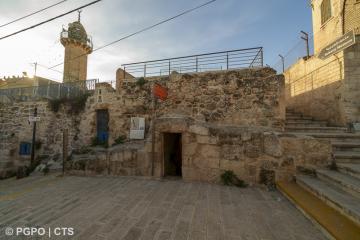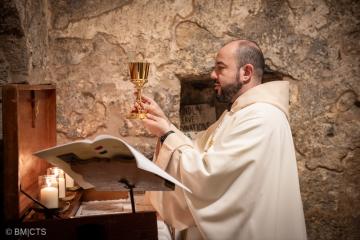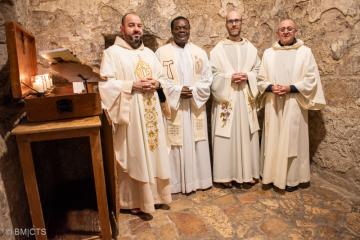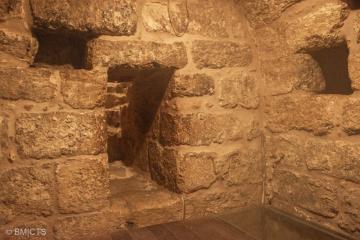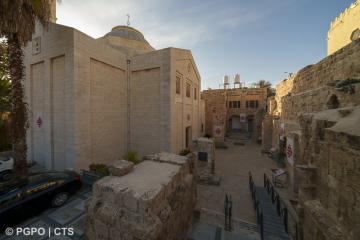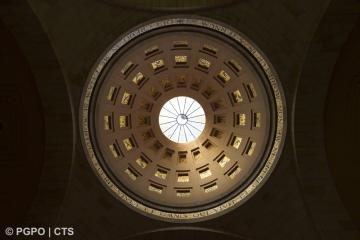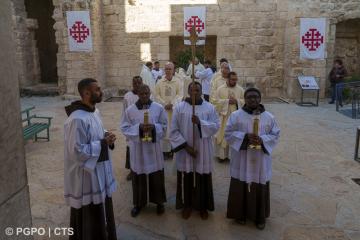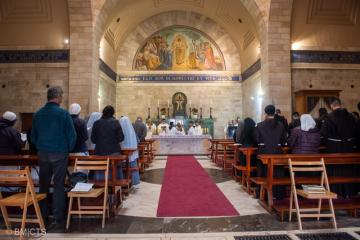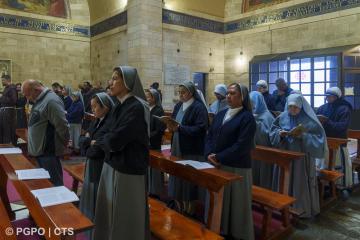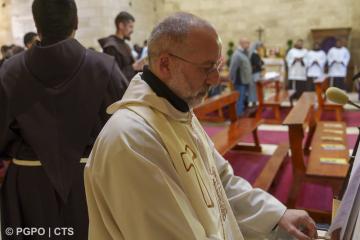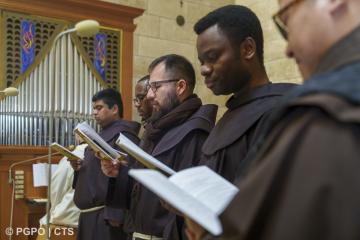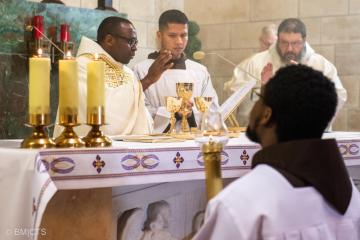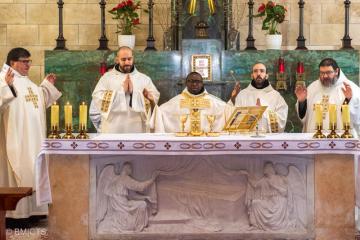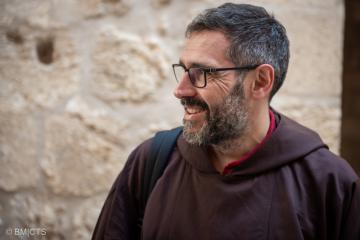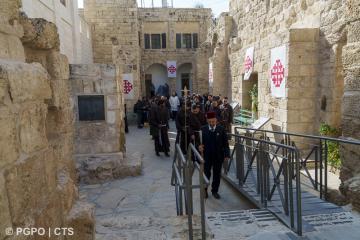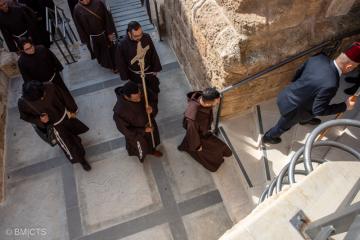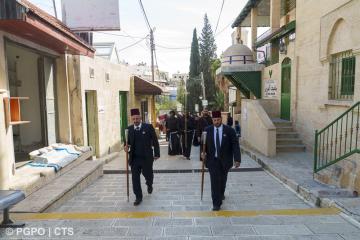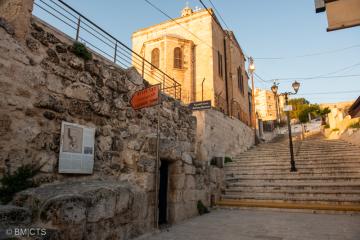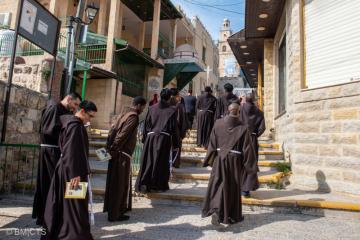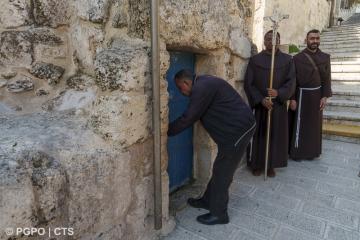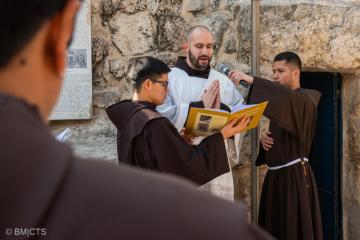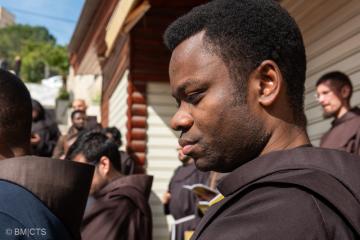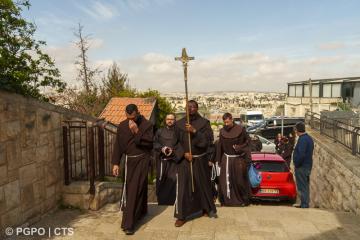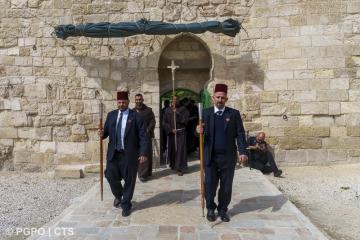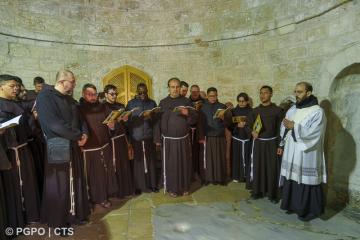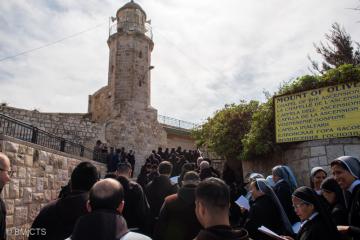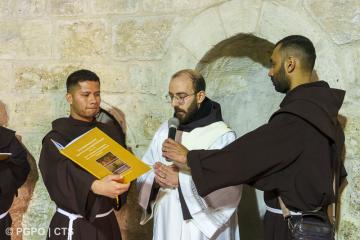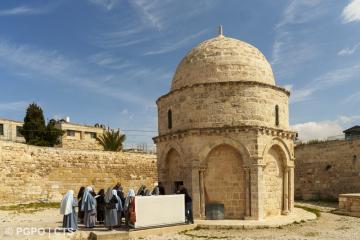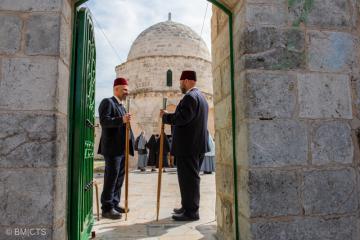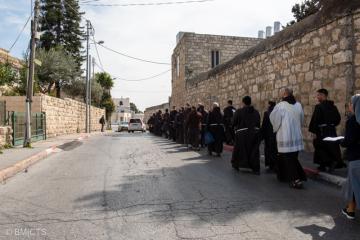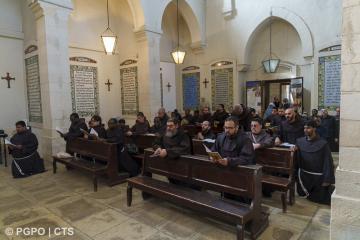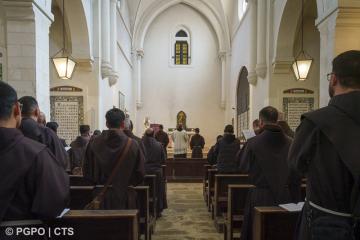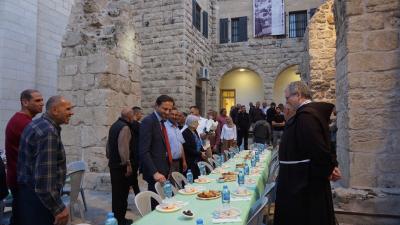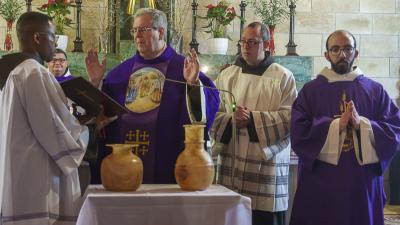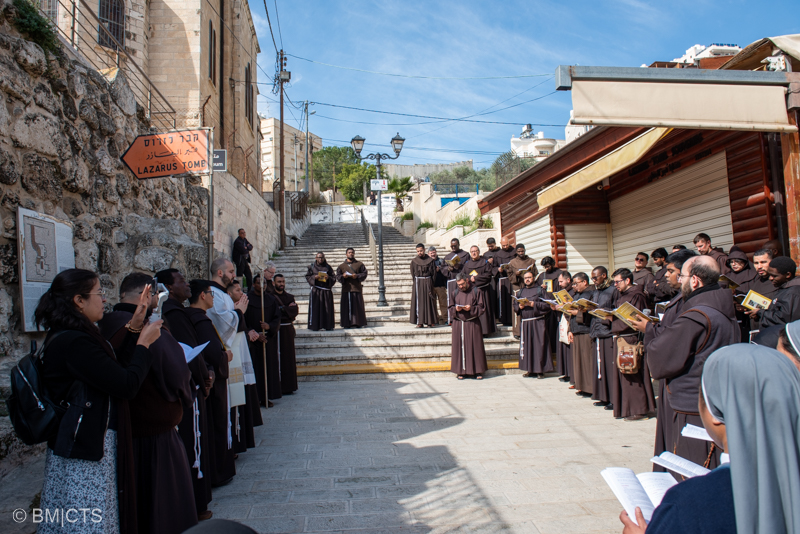
It is only just dawn when the Franciscan friars reach Bethany, the village of the friends of Jesus, Martha, Lazarus and Mary. The fourth peregrination of Lent, which this year falls on 14 March, takes place here.
As tradition has it, a first Mass was celebrated at 6.30 a.m. in “Lazarus’s Tomb”, presided over by fra Alberto J. Pari, Secretary of the Custody of the Holy Land. Immediately afterwards, at 7.30, the Mass of the peregrination was celebrated in the shrine, presided over by fra Michael Muhindo. After the Mass, those present made a small pilgrimage to the tomb of Lazarus, in front of which the Gospel recounting his return to life was proclaimed (John 11,3-45).
Bethany, the village of Lazarus
Bethany is behind the Mount of Olives, on the road that goes down from Jerusalem towards the desert of Judea and Jericho. The biblical name was changed in the Byzantine period to “village of Lazarus” today al-Azariya in Arabic. At the centre of the village, the church of the Franciscans recalls the house of Martha and Mary and the miracle of the resurrection of Lazarus, and it was built on the remains of three previous churches. The church was designed by the architect Antonio Barluzzi and was consecrated 70 years ago, in April 1954. The inscription in Latin under the dome reads: “I am the resurrection and the life; whoever believes in me, even if he dies, will live” (John 11,25). A few dozen yards away there is the “tomb of Lazarus”, at the time outside the built-up area.
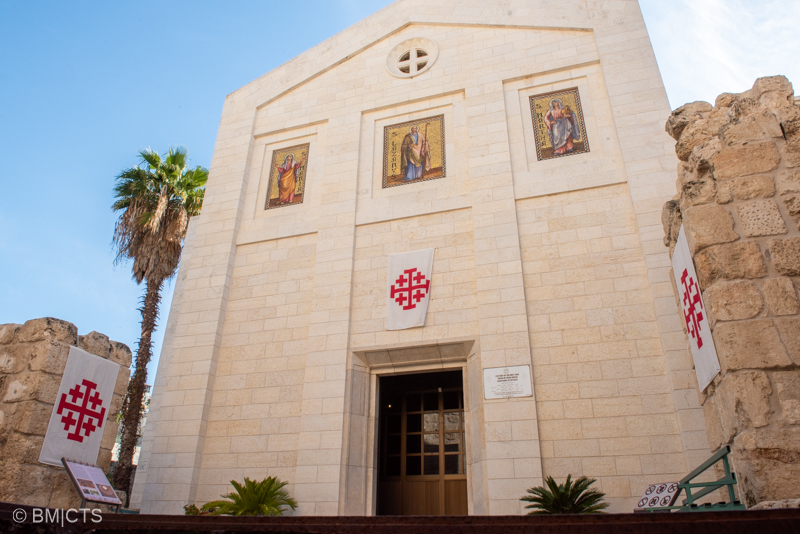
The silence of death
The homily was pronounced by fra Paolo Messina, a lecturer at the Studium Biblicum Franciscanum in Jerusalem, chosen to guide the Lenten reflections of the Franciscans. The early spring sunshine does not soften the inevitable drama that this place invites us to look at: death. “Personal experience tells us that we are always unprepared for death; despite our path f faith, the silence of death hurts us, upsets us and discourages us,” fra Paolo emphasized in his homily, dedicated to the “silence of death.” Jesus also experienced the same turmoil in the face of the death of his friend Lazarus (John 11,33).
Jesus arrived in Bethany three days later and is welcomed by Martha and Mary, the sisters of Lazarus. More than speaking f resurrection, Jesus “chooses to enter the silence of death, that silence from which Mary could not emerge. Jesus shares that moment with her, with his whole self.” In front of the lifeless body of Lazarus. Jesus invokes the Father: “The only words capable of breaking that silence are the words of prayer. Beyond the silence of death, there is a voice that speaks to us of life, that gives hope and that announces eternal life. Going through that silence, like Jesus, like Lazarus himself, we will hear that voice and we will return to life in all its plenitude.”
New routes
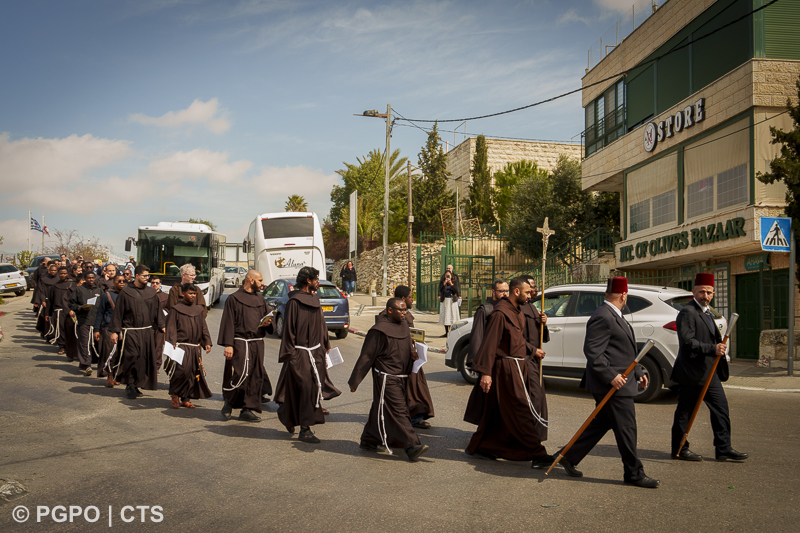
Until the early years of the this century, Bethany was effectively a suburb of Jerusalem, then the wall divided the village, leaving the shrine in Palestinian territory. This also changed the route of the Lenten peregrination, which after the celebration in Bethany, stops at the Chapel of the Ascension on the Mount of Olives and at the Church of the Pater Noster. The wall prevents following the traditional route through the shrine of Bethphage. Franciscans and faithful have to go through a checkpoint a few kilometres away from the shrines. Both in the place of the Ascension and in that which recalls the establishment of the Lord’s Prayer, faithful and friars concluded the peregrination listening to the Gospel specific to the holy place.
Marinella Bandini


